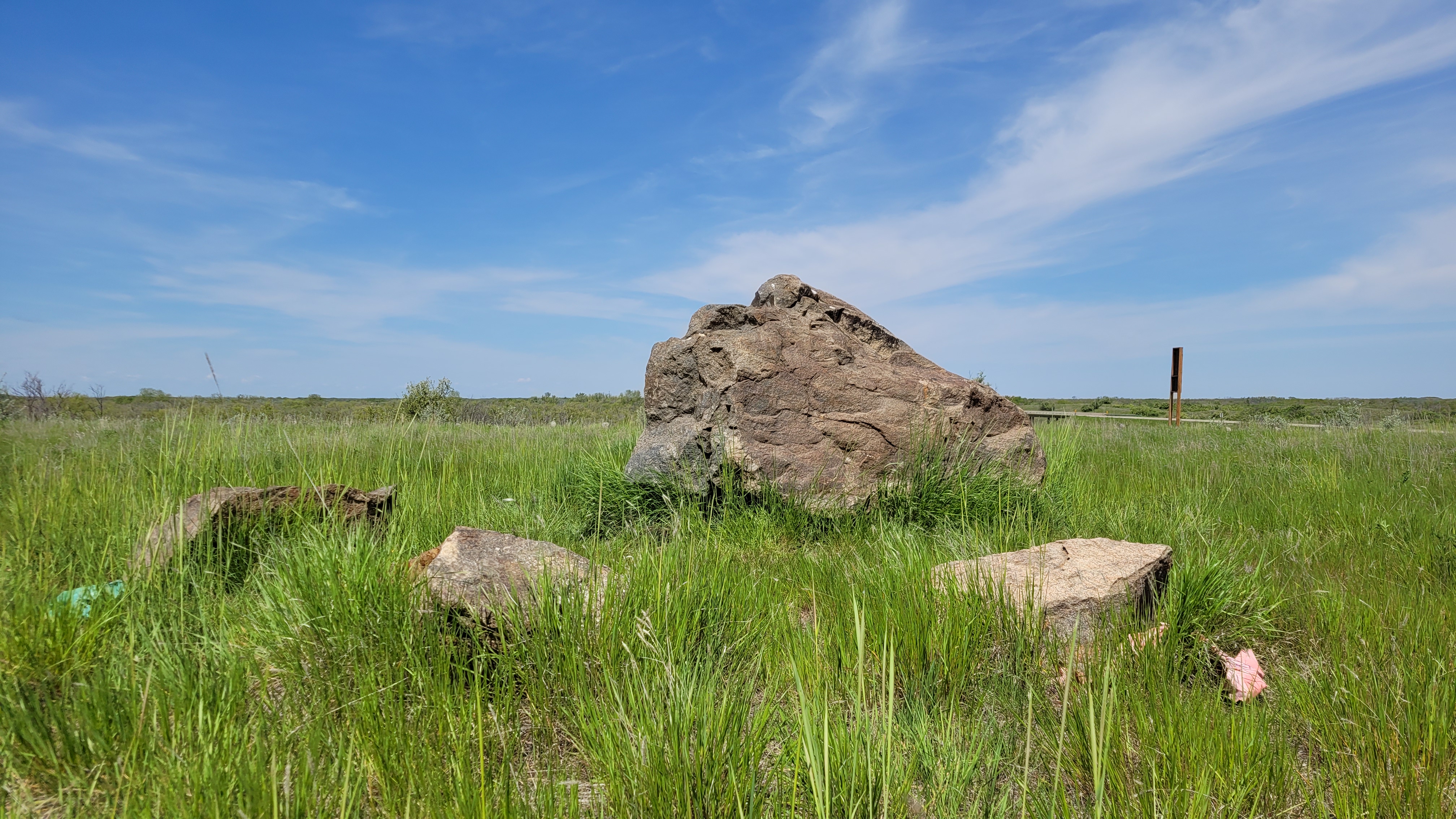Doctrines & Discoveries: Mistasinīy | Buffalo Child Stone
A visit with Doug Cuthand

Travel to the Buffalo Child Stone interpretive site beside Lake Diefenbaker, Saskatchewan. Doug Cuthand tells a story of the Stone’s origins, talks about its importance and needless destruction, and reflects on what we might learn from this story.
“Go Deeper” guide
Here are travel directions for your own learning tour to the site, along with some helpful background, questions for reflection or group conversation, and suggestions for next steps in your learning journey.
Head towards the town of Elbow, then take the #19 south, through Douglas Provincial Park. Just after the overpass over the railway, watch for a sign to the interpretive site on your right.
CLICK HERE to open map (link opens new window).
- mistasinīy (mist-AH-sin-nee): “Big stone” (Plains Cree). A resort village in the area spells the word “Mistusinne.”
- mostos awāsis asinīy: “Buffalo child stone” (Plains Cree)
- PFRA: The “Prairie Farm Rehabilitation Administration” was a federal Canadian government research and conservation program that established community pastures in the 1930s to counter the impact of devastating drought. It managed much Crown (public) land to the benefit of farmers as well as conservationists and First Nations communities. The PRFA was dismantled by the federal government in 2013, with significant impact to farming communities and First Nations across the prairies
- Do you, or does your family or community, have any special or sacred gathering places, buildings, unique items or heirlooms? Why are they important to you or your community?
- Have you or your community ever lost something significant—a building destroyed, a precious heirloom lost, etc? How did that feel? Was the loss the result of someone’s intentional actions? How did (or how would) that complicate the story?
- Doug Cuthand asks us to think of the prairies as home for Indigenous folks, that is, full of “places of love,” sites of people taking care of people? How might that change your sense or experience of the prairie landscape?
After listening, please sign our guest register & feedback form (link opens new window).
- read: Doug Cuthand, Askiwina: A Cree World (2007).
- visit: Ancient Echoes Interpretive Centre, Herschel SK, or Wanuskewin Heritage Park, Saskatoon.
do: look into the survival of natural prairie grasslands and other ecosystems in your region, ask about the preservation of prairie biodiversity, and how that relates to current land management practices.
Arrange for a viewing of the full-length documentary Custodians: A Story of Ancient Echoes (contact the MCC Saskatchewan office for information).
Doctrines & Discoveries is a production of MCC Saskatchewan’s Indigenous Neighbours program.
We are deeply grateful for the knowledge keepers who shared their stories, knowledge and insights with us. Proper protocol was followed for the sharing of these truths.
We are grateful to the elders and staff of the Saskatchewan Indigenous Culture Centre for their visionary work in establishing the Buffalo Child Stone interpretive site. www.sicc.sk.ca/buffalo-child-stone
Thanks to the following music artists. Their tracks are used under the Creative Commons licence:
- The opening loop is “Funky Percussions” (loop ver.1) by AudioCoffee. freesound.org/s/712649/ License: Attribution NonCommercial 4.0
- The closing track is “Around (Instrumental)” by Oursvince. www.tribeofnoise.com/music/show/29632 License: Attribution ShareAlike 3.0
MCC gratefully acknowledges financial support for this project from Sask Lotteries, via the Multicultural Initiatives Fund of SaskCulture.
Full transcript and a PDF of the episode available (links open new windows).
Subscribe on Spotify or Apple Podcasts (links open new windows).

